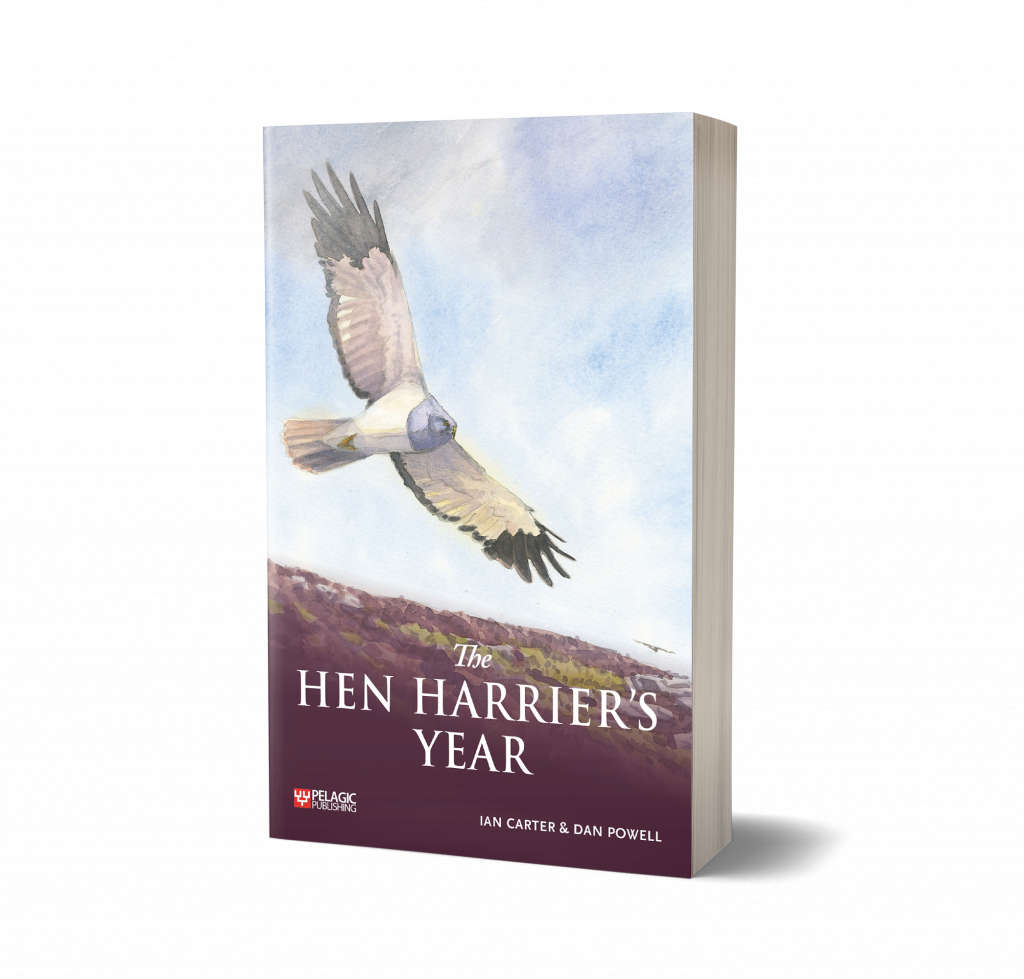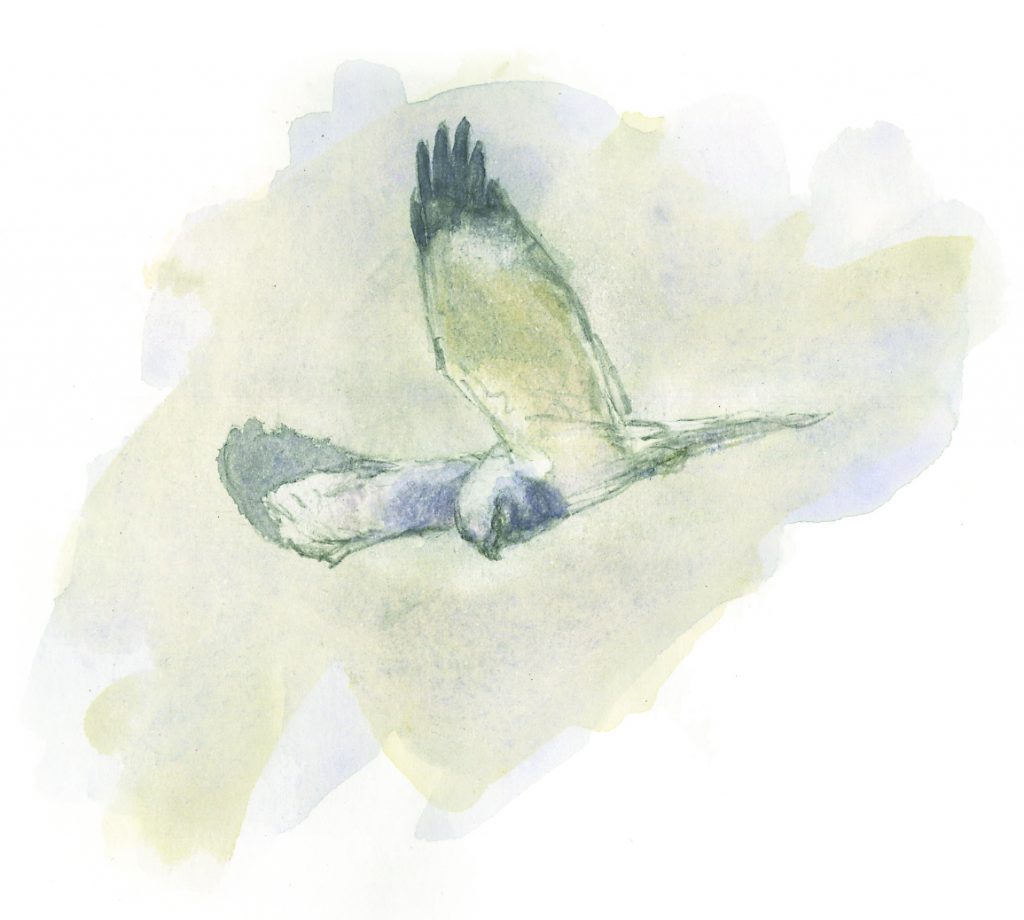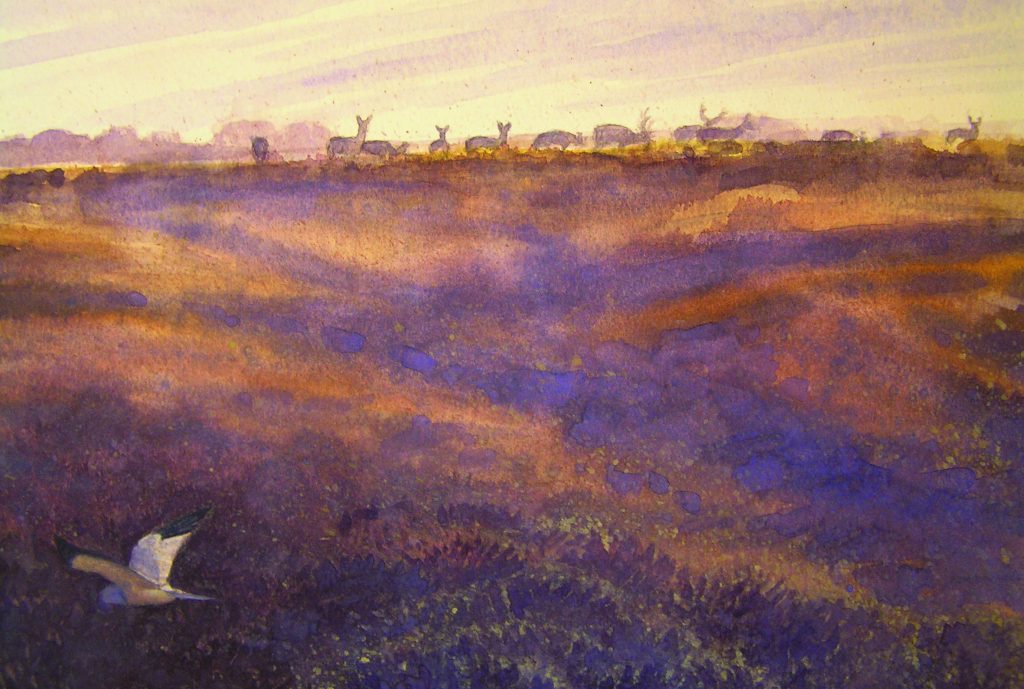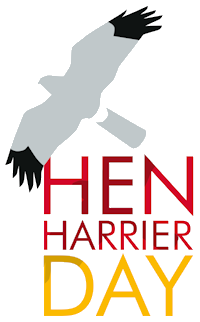
We recently caught up with ornithologist, lifelong naturalist and author Ian Carter, whose latest book, The Hen Harrier’s Year, a collaboration with award-winning wildlife artist Dan Powell, charts the month-by-month challenges through the seasons for Hen Harriers in Britain.
Published in October, the book has been widely praised by naturalists and environmental campaigners for its affectionate portrait of the species, combined with hard-hitting commentary on the illegal persecution faced by this charismatic bird.
HHA: Can you tell us a bit about your background, Ian?
I worked as an ornithologist for Natural England for 25 years. My first contract was carrying out ship-based surveys of seabirds in waters all around Britain, but later I focused more on species conservation, including birds of prey. I spent several years working on the Red Kite reintroduction project, and then became involved with Natural England’s flagship Hen Harrier recovery programme.
HHA: What prompted you to retire early and start writing?
Working on the Hen Harrier project was the final straw really. I became so frustrated by Natural England’s inability to speak out. We did some pioneering work identifying the threats faced by harriers, but the organisation lost the independence it once had. It became increasingly difficult to talk about illegal persecution on intensive grouse moors, which is the main reason the bird is doing so badly. It’s lovely now, as an author, to be able to write what I think, with no chance of a rewrite by the government’s PR machine.
HHA: Why did you decide to focus on the Hen Harrier?
After my involvement in the Natural England project, it seemed an obvious choice. It is a bird I know well, and it has a fascinating story to tell. It’s a complete contrast to our earlier book, The Red Kite’s Year, which was about a raptor success story. Hen Harrier recovery is still precarious, but as more people become aware of the issues, so the chances of action being taken increases.
HHA: Why did you decide to structure the book month-by-month?
I wanted to follow the Hen Harrier through a typical year and describe the different seasonal challenges the bird faces. This approach will also allow readers to dip in and out of the book to find out more about Hen Harrier behaviour at any time through the year.
HHA: Who did you have in mind as the potential audience when you were writing?
I hope there is enough substance to the book to appeal to the experienced and knowledgeable naturalist, but I also wanted it to be accessible – to draw in a wider audience and raise the profile of the Hen Harrier. Dan’s artwork captures the behaviour of the bird so beautifully that I think it brings the bird’s story to life for every audience.

HHA: You wrote an entire chapter about conflict on the grouse moors – what’s your view on the possible solutions to this issue?
When I started working on the Hen Harrier project, I felt that the solution lay in compromise and negotiation. We tried this for many years – decades actually. But it didn’t work and now my attitude has changed. There are vast areas of the countryside managed as intensive grouse moors to provide a few days shooting for a few people, with all the legal and illegal killing that goes along with that. Then there is heather burning, the associated pollution and release of carbon, the increased flood risk, and the overall loss of biodiversity. These costs, including the perilous state of the Hen Harrier, are borne by the wider community, all for the benefit of a tiny number of people. Surely this can’t continue.
HHA: How do you feel about the future of the Hen Harrier in the UK?
I’m optimistic in the medium and longer term. I think the glare of publicity is starting to have an impact on public opinion, and I don’t think that the outdated attitudes of grouse moor managers will be tolerated for much longer. The writing is on the wall. We encourage other countries to behave reasonably, to preserve their wildlife and maintain their forests, but we need, first, to look closer to home.
As Ian concludes in the book:
“The Hen Harrier’s fate in the coming years will tell us much about our attitudes towards birds of prey and whether they have changed sufficiently to allow this particular species a place in our countryside.
Anyone who has delighted in its spectacular skydancing display flights over the moors, watched birds head home towards their communal roosts in the depths of winter, or even chanced upon a lone hunting bird, sweeping back and forth across the fields ‘as if it were searching for a lost object’, will know just how much is at stake.”

The Hen Harrier’s Year by Ian Carter and Dan Powell is published by Pelagic Publishing
All images reproduced with permission of Pelagic Publishing
